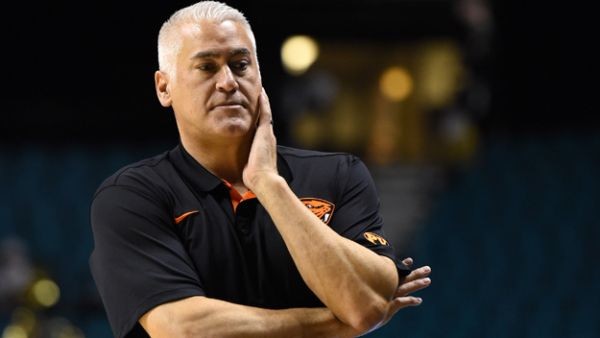Expectations Bring Growing Pains at Oregon State
Posted by Mike Lemaire on December 9th, 2016When Gary Payton II graduated from Oregon State last spring, it was well understood that the Beavers were losing one of their best players of all-time and would face an uphill battle back to the NCAA Tournament. With one month of this season now in the books, dancing again in March seems all but forgotten. Oregon State lost a close road game to a marginal Charlotte team last weekend, dropping its overall record to 3-6 and reflecting the team’s sixth straight loss to a Division I opponent. While head coach Wayne Tinkle‘s two-year extension and raise in light of the team’s first NCAA appearance since 1990 was well-deserving, Oregon State knew the program would spend this season rebuilding. Still, even though they were clearly confident in the direction of the program, this is not the kind of disastrous backslide that anyone in Corvallis envisioned.
Building basketball prestige in a place where there isn’t much requires a lot of things to go right. Wins on the court or on the recruiting trail help build buzz around the brand, which can often be the start of something more sustainable. Tinkle looked to doing just that, but the team’s brutal start this year has undone a lot of that momentum. The importance of Payton’s loss cannot be overstated, but it appeared as if the program was in good hands with rising sophomores Stephen Thompson, Jr., Tres Tinkle and Drew Eubanks. Thompson, however, missed six of the team’s first seven games with a foot injury, and Tinkle, who was the team’s leading scorer, broke a bone in his wrist. Mix in an ACL rehab that is keeping freshman Ben Kone on the bench as well as a pair of suspensions for promising wing Keondre Dew, and it is somewhat surprising the elder Tinkle has managed to keep his sanity in place.
Of course, there is still time for Tinkle to altogether lose it, and his offense is doing its best to expedite the process. Only three teams in the country are turning the ball over at a higher rate than Oregon State (26.5% of possessions) and it has finished a game with more assists than turnovers just once this season (NAIA opponent Southern Oregon). It would help if the team’s two best offensive players could take the floor together, but Tinkle and Thompson have not helped the issue. Assuming the Beavers eventually stop throwing away more than a quarter of their possessions, there is still more to be concerned about. Thompson and freshman Jaquori McLaughlin are the only reliable three-point shooters on the roster; the team seems to only grab offensive rebounds by mistake; and free throw shooting leaves a lot to be desired. For a team that doesn’t like to push the pace, these deficiencies are particularly glaring.
What must be especially frustrating for Tinkle is that his defense has been surprisingly good. The Beavers’ athleticism helps them contest a lot of shots, protect the rim and limit second chances. This stings in particular because it represents clear evidence that the team has missed several chances for attainable wins. There will come a day, though, when the Beavers will return to full strength and could find a way to stay competitive in a watered-down Pac-12. But this season is more important than many might think. Breakthroughs are fleeting and Tinkle’s team needs all the positive momentum it can get if Oregon State plans on changing its basketball fortunes for good.










































